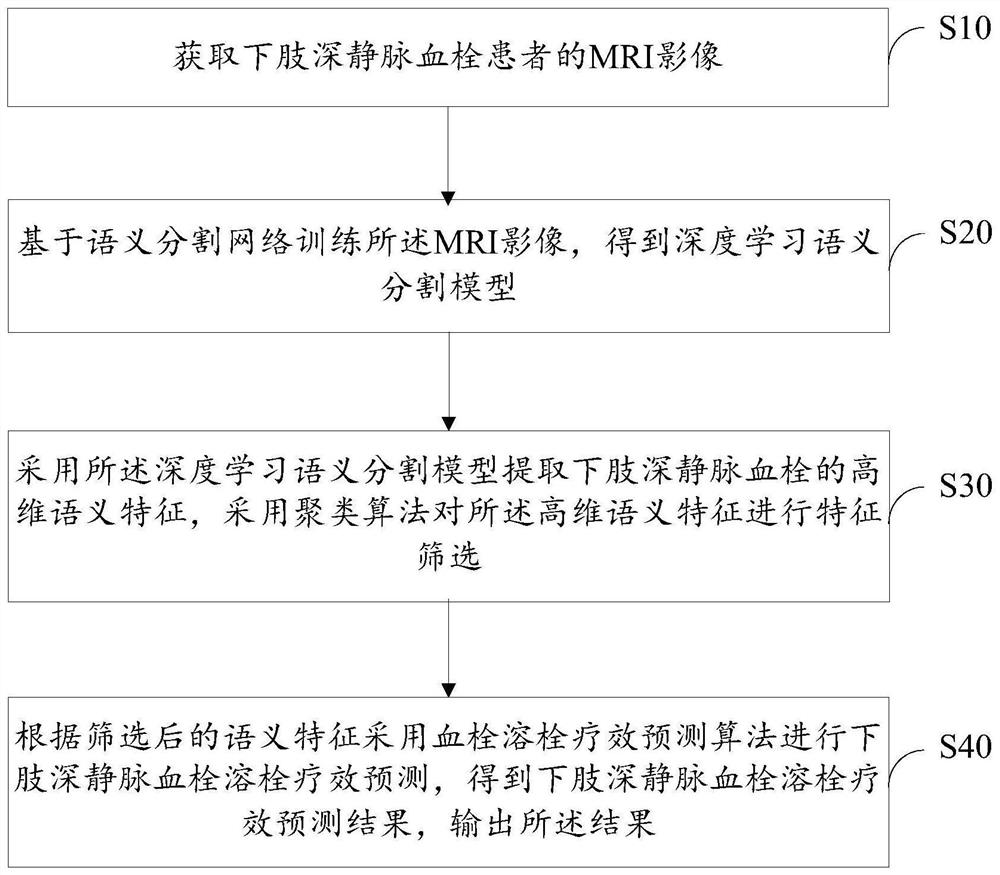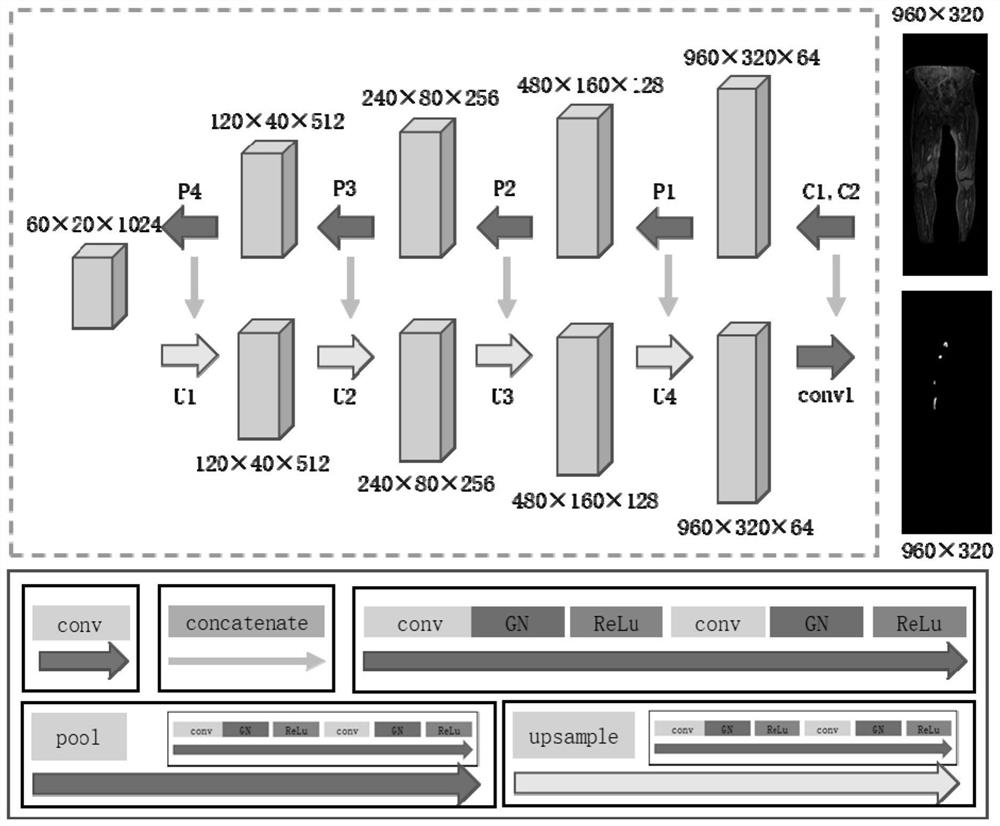Deep vein thrombosis thrombolytic effect prediction method and system, storage medium and terminal
A technology for deep vein thrombosis and curative effect, applied in the field of prediction of curative effect of deep vein thrombosis of lower extremity, can solve the problems of complex feature screening technology process, time-consuming and laborious, failure to fully explore the internal relationship between data, etc., and achieve high research value and application. value, reducing the burden on doctors, and improving the efficiency of diagnosis
- Summary
- Abstract
- Description
- Claims
- Application Information
AI Technical Summary
Problems solved by technology
Method used
Image
Examples
Embodiment Construction
[0045] The present invention provides a method and system, a storage medium, and a terminal for predicting the curative effect of deep vein thrombosis in lower extremities based on a semantic segmentation model. In order to make the purpose, technical solution, and effect of the present invention clearer and clearer, the present invention will be further described in detail below. It should be understood that the specific embodiments described here are only used to explain the present invention, not to limit the present invention.
[0046] see figure 1, figure 1 A schematic flow diagram of a method for predicting the curative effect of deep vein thrombosis of lower extremity deep vein thrombosis based on the semantic segmentation model is provided for the embodiment of the present invention, as shown in figure 1 As shown, it includes the steps:
[0047] S10. Acquiring MRI images of patients with deep vein thrombosis of lower extremities;
PUM
 Login to View More
Login to View More Abstract
Description
Claims
Application Information
 Login to View More
Login to View More - R&D
- Intellectual Property
- Life Sciences
- Materials
- Tech Scout
- Unparalleled Data Quality
- Higher Quality Content
- 60% Fewer Hallucinations
Browse by: Latest US Patents, China's latest patents, Technical Efficacy Thesaurus, Application Domain, Technology Topic, Popular Technical Reports.
© 2025 PatSnap. All rights reserved.Legal|Privacy policy|Modern Slavery Act Transparency Statement|Sitemap|About US| Contact US: help@patsnap.com



